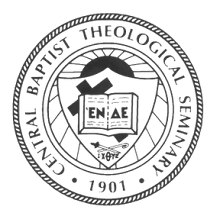Over the weekend many of us have sought to honor
and remember our mothers, as well as give thanks for the varied forms of
mothering we are gifted to offer and receive.
Treasured old pictures have surfaced, dusting off memories for us as we
reflect on the presence or perhaps absence of this formative care.
My own mother,
Bernice Coe Marshall, was born the same year the Titanic went down (1912), and
she always wryly noted that coincidence.
She grew up in a pastor’s household, that of her grandfather who served
as a missionary in Indian Territory. Her
own father, a professional baseball player, had abandoned her mother and the
two children, and they lived with the stigma of an absent father and subsequent
divorce.
Understandably, when
she married she sought to provide stability to her family. She delighted in caring for her husband,
Truman, and her three children, which arrived after agonizing years of waiting,
were her great joy. I am grateful for
her tireless efforts in our behalf, and my brothers and I share the graceful
imprint of her love. Absent from us, yet
present with the Lord, we remember her fondly.
We experience her
presence as we tell the stories of her humor, her enduring identity as a
“church lady,” and her embrace of her years as a widow. We feel her absence as new children are added
to the clan and think of how she would welcome them. Presence and absence comprise the dialectic
that frames life in relationship.
 |
| Copley, John Singleton, 1738-1815. The Ascension, from Art in the Christian Tradition, a project of the Vanderbilt Divinity Library, Nashville, TN. |
Soon we will
celebrate Ascension in the liturgical year, reminding us of the ways in which
Jesus can be both absent and present as Risen Lord. Luke offers two scenes of departure—at the
conclusion of his Gospel and the beginning of Acts. Marking the cessation of his earthly
appearances, this version of the post-resurrection interaction between Jesus
and his disciples culminates with his being “carried up into heaven” (Luke
24:31b). Acts puts it this ways: “he was lifted up, and a cloud took him out of
their sight” (1:9b).
 |
| JESUS MAFA. The Ascension, from Art in the Christian Tradition, a project of the Vanderbilt Divinity Library, Nashville, TN. |
Remaining with them
as Holy Spirit, yet being physically withdrawn from their sight, Jesus
continued to inhabit their gatherings and their imaginations. Their faith in him prompted their love for
the saints and their proclamation of his resurrecting power. They also had the impression that this form
of absence would not be permanent, for “this Jesus, who has been taken up from
you into heaven, will come in the same way . . .” (Acts 1:11b).
 |
| Ascension of Christ, from Art in the Christian Tradition, a project of the Vanderbilt Divinity Library, Nashville, TN. |
Remarkably,
ascension does not mark the end of presence; rather, it shifts the mode of
presence into the empowered community who would recognize him in the breaking
of break, acting mercifully, and welcoming the stranger. As his visible body, the church embodies his
continuing appearance.
Molly T. Marshall
Central prepares women and men for seeking God, shaping church, and
serving humanity.


No comments:
Post a Comment